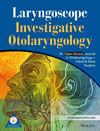Health policies affect clinical practice and outcomes, serving as an impetus for civic engagement. Voting participation among Otolaryngology–Head and Neck Surgery (OHNS) trainees is poorly characterized and may be afflicted by distinct barriers specific to training. This is the first study to evaluate voter participation among OHNS trainees.
We analyzed survey data from the 2020 American Academy of Otolaryngology Section for Residents and Fellows (AAO SRF), capturing voting practices among trainees as well as attitudes to promoting electoral participation among programs. Wilcoxon rank-sum test was used to assess statistical differences by voting practices.
20.9% of 277 respondents experienced decreased electoral participation since starting residency. These rates did not vary significantly by trainees' subjective views on the importance of voting (p = 0.69, 95% CI = [−184, 23]). While 84.6% (226 out of 267) of eligible trainees voted in the 2016 election, eligible nonvoters most frequently cited reasons such as lack of time and perceived lack of impact. Additionally, the greatest proportion of trainees voted on election day (42.6%), followed by mail-in/absentee ballot (24.2%), and finally by early voting (14.8%). Trainees reported a wide range of attendings (71.5% responded ≤ 2 attendings) who explicitly advocated for trainee voting participation. Greater attending support was concordant with trainees' overall voting (p = 0.057, 95% CI = [−6, 84]) and voting in the 2016 election (p = 0.042, 95%. CI = [−95, 0]). Even if excused from clinical duties, 10.5% of respondents stated they would not leave work to vote due to guilt of being away from clinical duties, and 27.8% of respondents would do so reluctantly. These different practices among trainees did not significantly vary with overall voting participation (p = 0.20, 95% CI = [−8, 124]) or 2016 electoral participation (p = 0.20, 95% CI = [−136, 1]).
Voting participation among OHNS trainees is higher than the national average of adults but slightly lower than other medical specialties. Training program culture can mitigate barriers to electoral participation.
NA.



